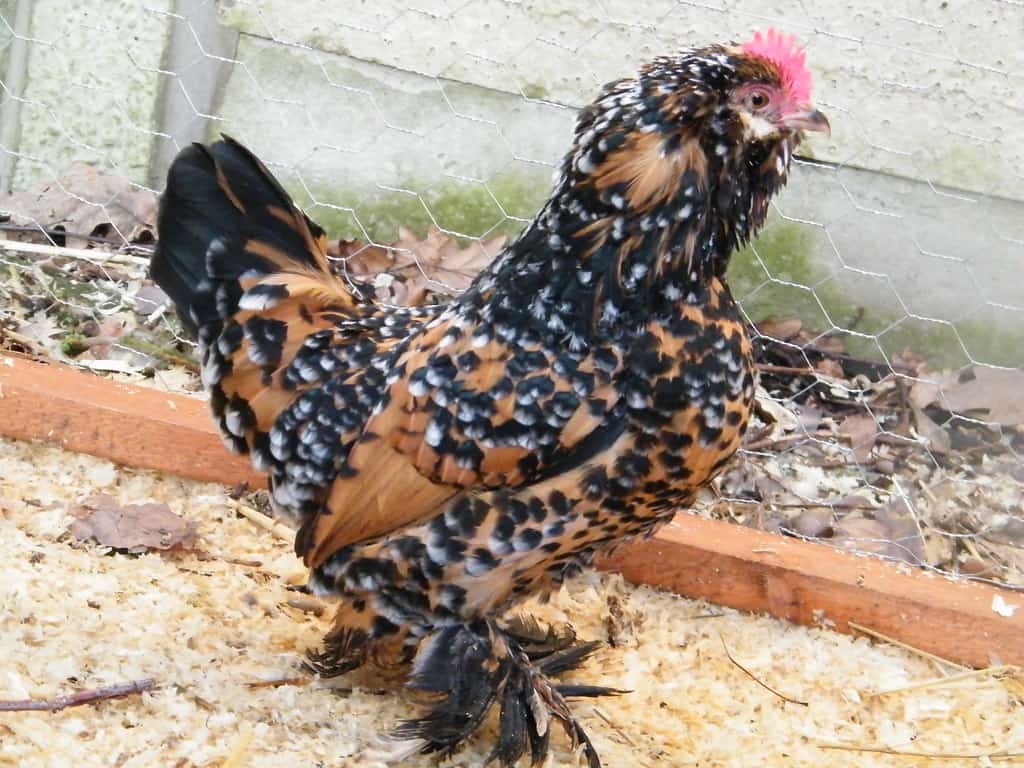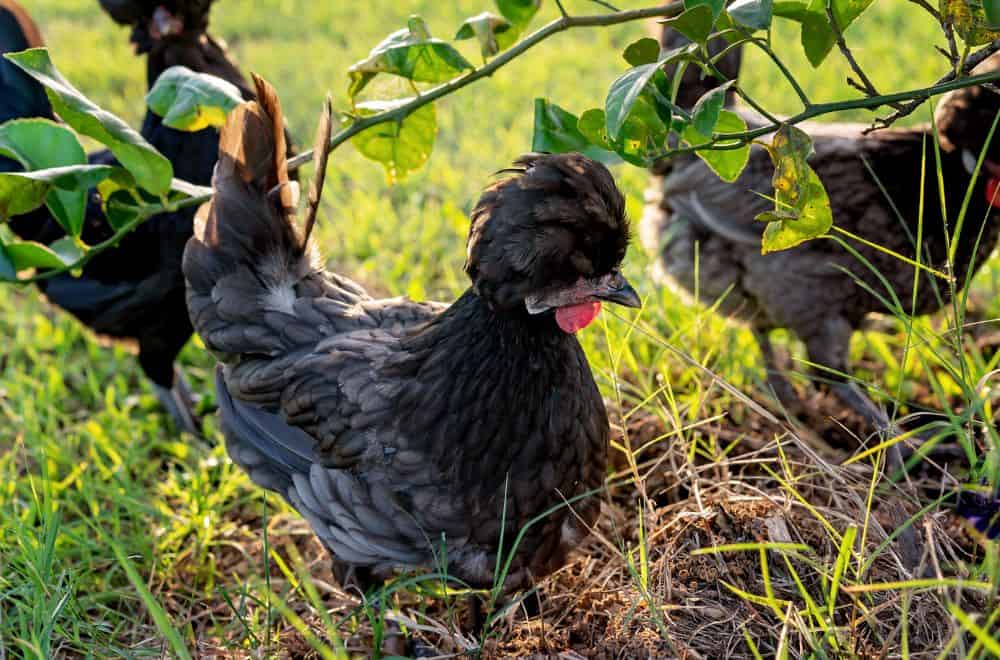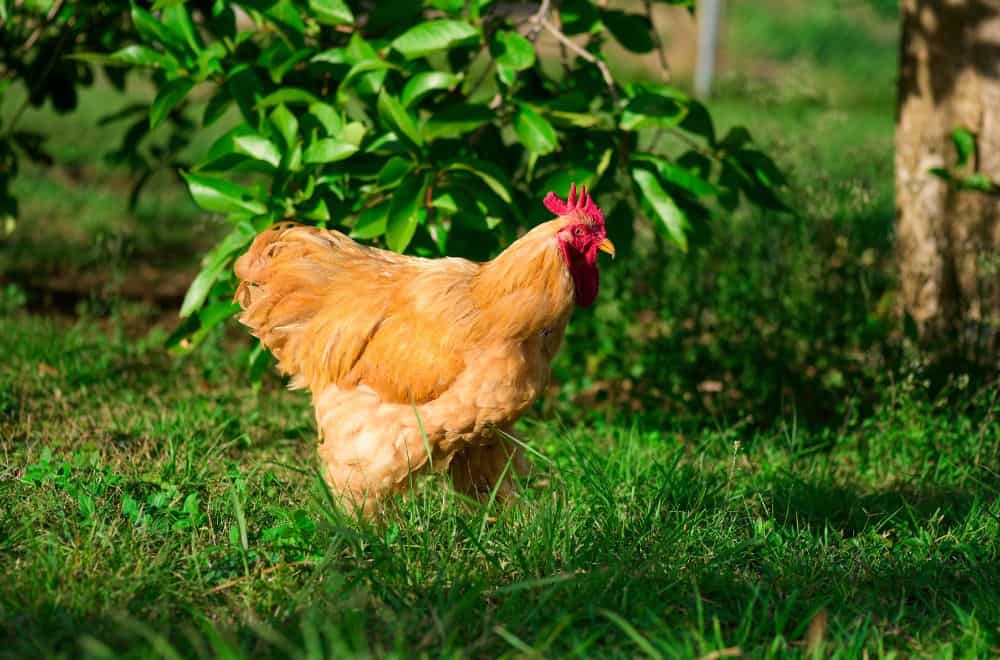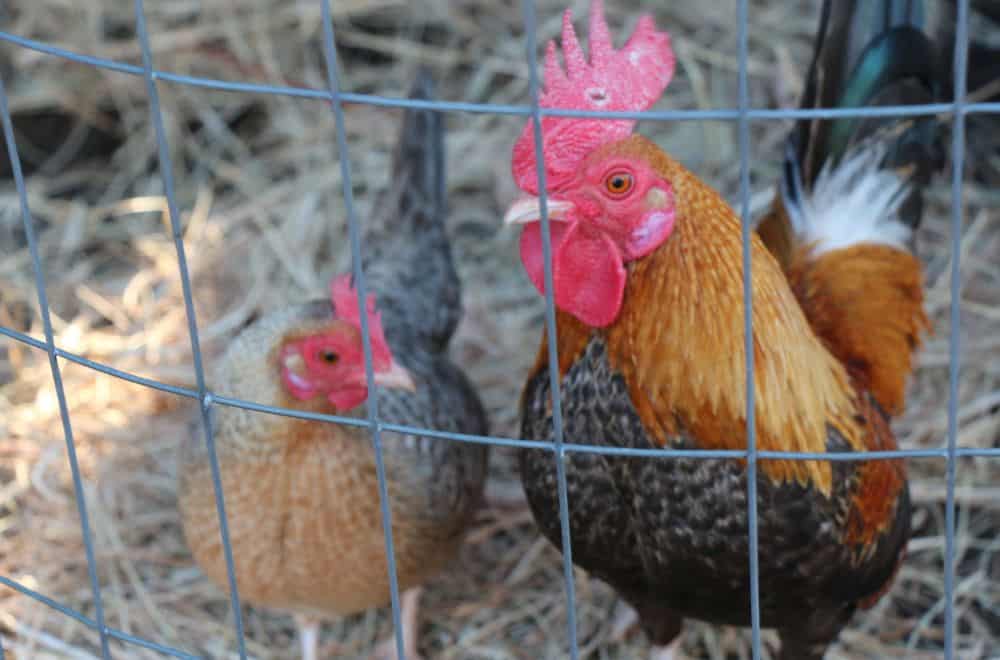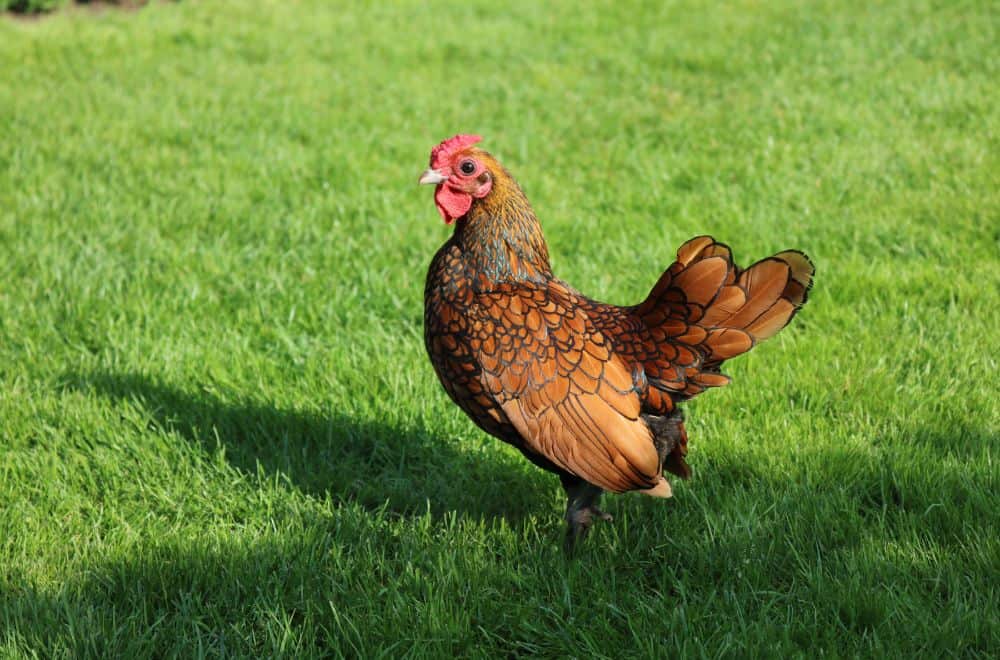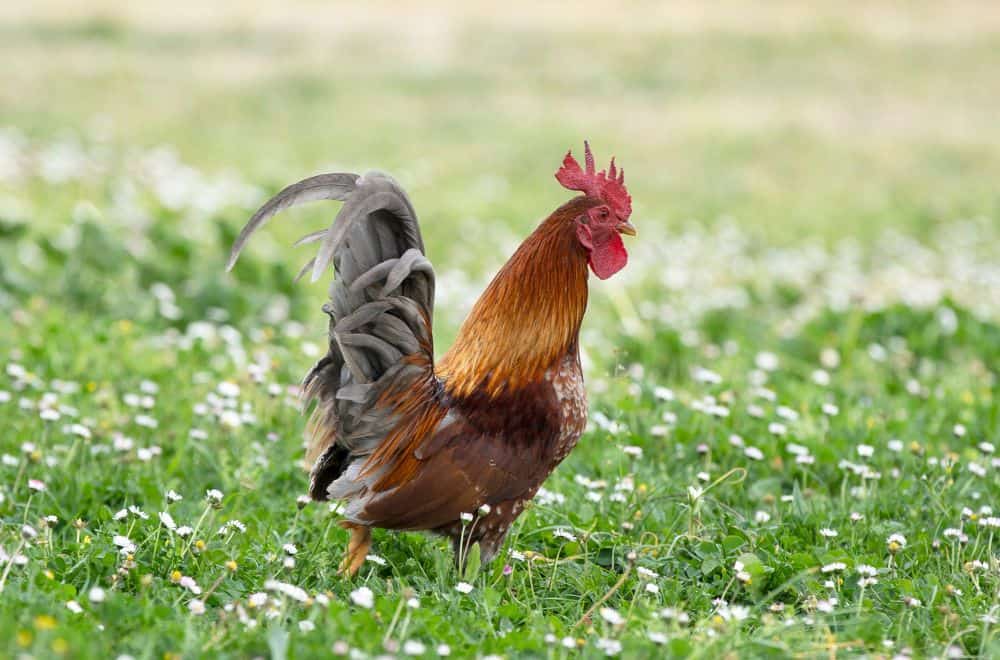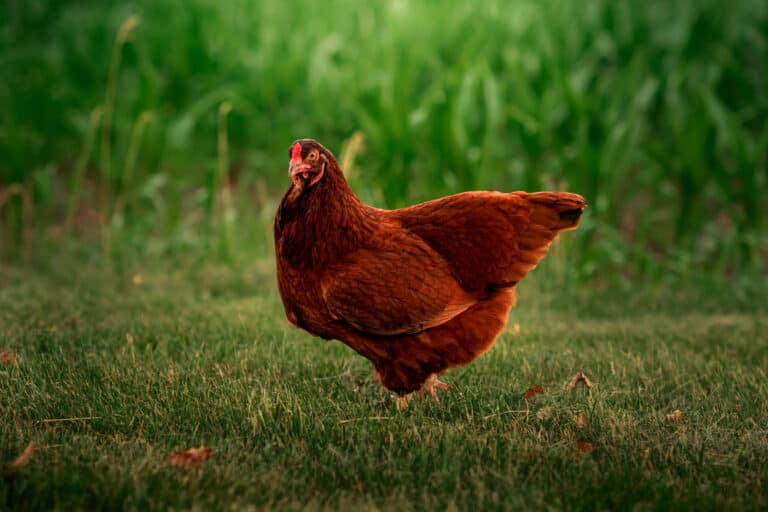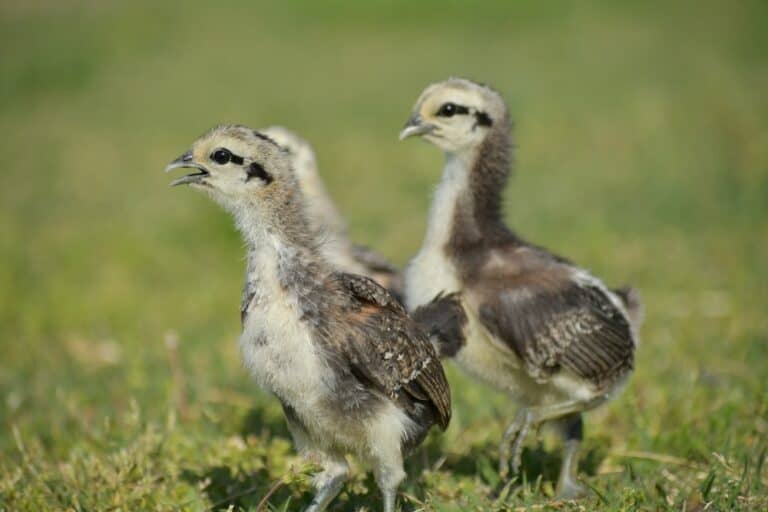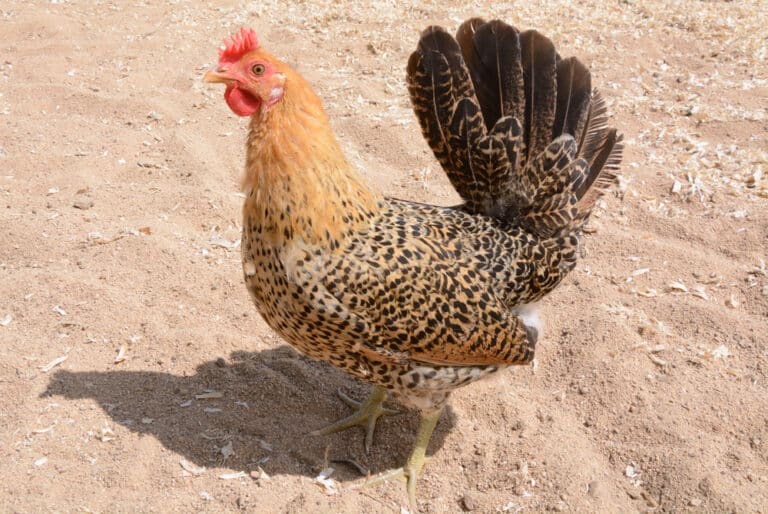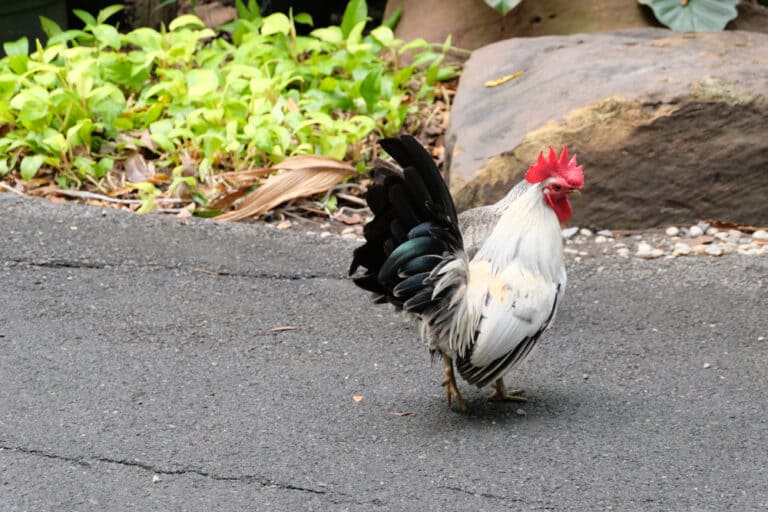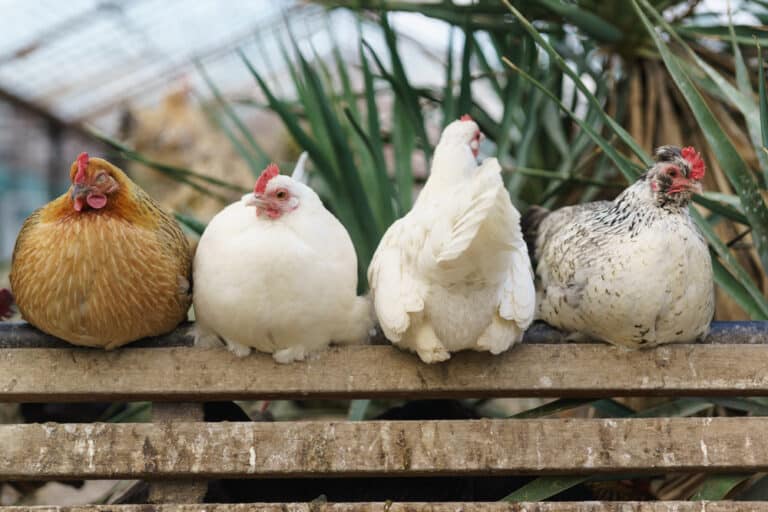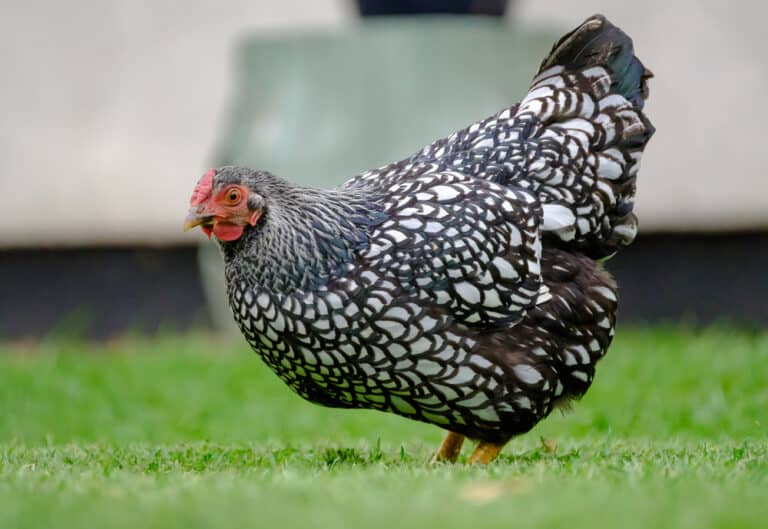Are you thinking of keeping chickens? Interested in learning more about some of the smaller breeds that are out there? Then we’re here to help!
We’ve got all the information you need about some of the best small chicken breeds. We’ll look at how big they grow, their other important characteristics, and what they need to flourish.
Ready to learn more about these delightful birds? Read on!
Small Chicken Breeds
1. Barbu D’Uccle
The Barbu D’Uccle was a breed developed in the town of Uccle, near Brussels in Belgium. It was the work of a breeder named Michael Van Gelder, who first reared the birds early in the twentieth century.
The breed is what’s known as a “true bantam”. Bantams are miniature hens, but many breeds were developed from standard sized fowls. True bantams, on the other hand, have no standard equivalent. The Barbu D’Uccle is one of eleven true bantam breeds originating in the Netherlands.
They’re pretty birds, with fluffy feathers that extend down their legs and even to their toes. They have a full beard – a ruff of feathers beneath their beak – and a single comb.
Fully grown males weigh around 1.65 pounds, while females are just 1.4 pounds.
In Belgium, chickens can be one of twenty-eight different colors whilst still meeting the breed standard. These include cuckoo, porcelain, blue quail, black mottled, and white.
In the USA, however, standards are narrower, and only seven color varieties are accepted. These are black, white, porcelain, millefleur, golden neck, mottled, and self blue.
The breed has a sweet temperament – affectionate, curious and friendly. But their feathered feet mean that they don’t cope well with snow or muddy ground. If you’re keeping these chickens, a dry run is essential.
2. Barbu D’Anvers
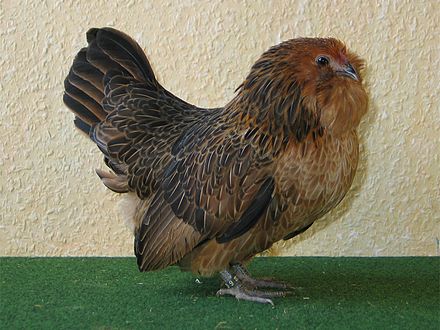
The Barbu D’Anvers is another Belgian bantam. You may also hear it referred to as the Belgian Bearded D’Anvers or Antwerp Belgian.
The latter name reflects what’s known of its origins. The breed is thought to have appeared in Antwerp, with the first recorded mention occurring in 1858. Today, it’s the only Belgian true bantam breed not to be classified as endangered.
Adult males weigh around 1.5 pounds, while females are a little lighter, at about 1.3 pounds. Both sexes have a large ruffle of feathers – known as a “beard” – around their necks. The comb is rose colored and the wattles are small, with some birds having no wattles at all.
The Belgian breed association recognises 29 different color varieties, while in Germany, 35 colors are accepted.
The hens lay small eggs with creamy white shells, producing around 150 a year. They incubate them well, and they’re good at raising their chicks.
Barbu D’Anvers are mainly kept today as show birds, admired for their good looks. They have a friendly disposition and entertaining character, and also make great pets.
3. Scots Dumpy
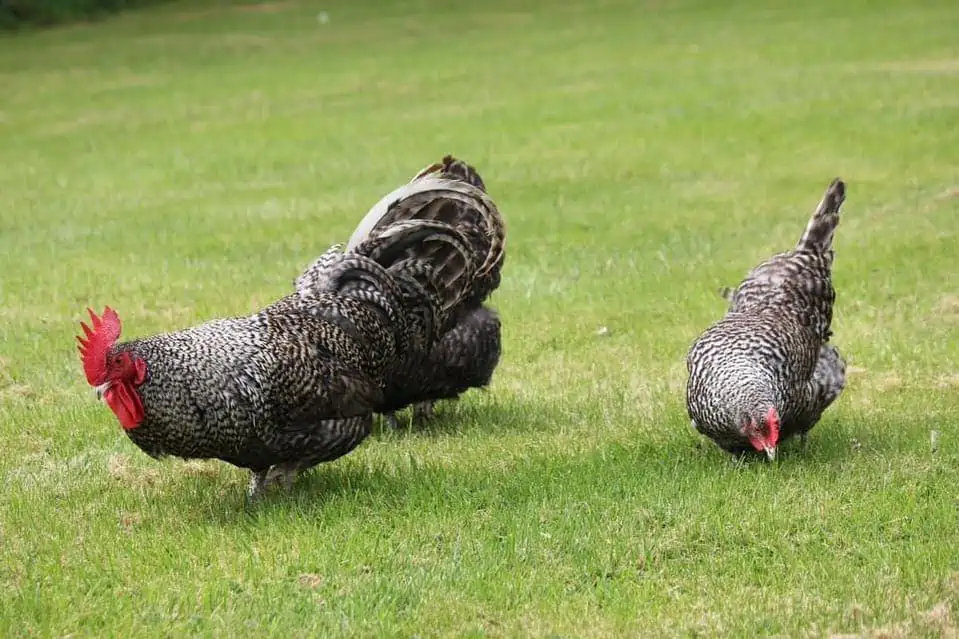
As you’d expect from its name, the Scots Dumpy hails from Scotland – and it’s rather short!
Scots Dumpies have been bred in Scotland for over two centuries. Over time, they made their way over the border to England, and they are recorded at a London poultry exhibition in 1852.
But the breed has faced challenges. Numbers gradually declined through the twentieth century, and by 1975 a survey of Scotland found not a single Scots Dumpy chicken.
It was saved from extinction by a Scottish wife! Violet Mabel Carnegie travelled to Kenya to live with her husband, and included in her dowry were several Scots Dumpies. Some of the descendants of those birds travelled back to Scotland in 1977, allowing the breed to be re-established.
It’s what’s known as a “creeper chicken”, a fowl with a genetic mutation that gives it abnormally short legs. As a result of this, the shanks of this sweet little chicken are only 1.5 inches long.
In every other way, however, the Scots Dumpy is a perfectly normal looking chicken. All the regular poultry color varieties are represented in the breed. And all birds have a single, bright red comb, small earlobes and medium-sized wattles.
If you’re looking for a small breed that can produce plenty of eggs, they’re well worth considering. Scots Dumpy hens will lay around 180 eggs per year, with cream or white shells.
They’re good mothers too, sitting patiently as they wait for them to hatch. It’s for this reason that they’re sometimes used to incubate the eggs laid by flightier game birds.
4. Polish Bantam
The Polish Bantam is a striking looking chicken, with a large pom-pom-like crest. The feathers are so heavy that they can obscure its view. That’s given them a reputation for being a little flighty, as their restricted vision means they can sometimes be taken by surprise.
But they have lovely temperaments and make great pets. They enjoy human company, and they’re great with children. Just make sure that little ones handle them with care, as they’re small and delicate birds.
They’re also inquisitive and fearless – perhaps a little too fearless at times! It’s not a good idea to keep them alongside other animals, as they aren’t always aware of potential danger.
There are three different varieties – bearded, non-bearded and frizzle. The latter variety is particularly eye-catching, with feathers that curl outwards rather than lying flat. And all varieties an be found in a large number of different colors too.
It’s hardly surprising, then, that Polish Bantams are most often kept as show birds or pets. But they can also be good layers, although they’re not the most effective at incubating their eggs.
5. Cochin Bantam
While the standard Cochin is one of the larger poultry breeds, the bantam variety is much smaller. Adult males weigh only around 2 pounds, while females are around a quarter of a pound lighter.
The breed’s ancestors were Chinese chickens exported from Shanghai. Both the bantam and standard varieties of Cochin were included in the American Standard of Perfection – the official poultry breed standards – in 1874.
There were originally four color variations: buff, white, partridge and black. But today, you can find Cochin bantams in a wide array of shades.
They have beautiful, abundant plumage, with the feathers extending down their legs and onto their toes.
And despite being bred mainly as show birds, the hens are also good egg layers and sitters. They can produce eggs throughout the winter months, and will also incubate the eggs of other breeds.
6. Dutch Bantam
The Dutch Bantam is another small and charming chicken. The birds range from 8 to 14 inches in height. Adult males weigh no more than 1.2 pounds, while adult females weigh about a pound.
It’s a true bantam breed with no standard sized counterpart. The first recorded reference to the birds is in 1882. Legend has it that they were bred in the Netherlands for use by peasant farmers. Their eggs were too small to be required by the landed gentry!
Dutch bantams first made their journey to the USA in the mid twentieth century. Today, there are also active breed associations in the UK, Germany and South Africa.
No fewer than 29 different color varieties are recognised in the Netherlands. But whatever their color, all Dutch bantams have a five-pointed comb, white earlobes and white skin.
They’re friendly chickens, and the hens lay plenty of eggs – around 160 per year. They incubate them effectively too.
All this makes them a great choice for pets or backyard animals. Just make sure you provide appropriate shelter and warmth, as they don’t cope well with colder weather.
7. Rosecomb
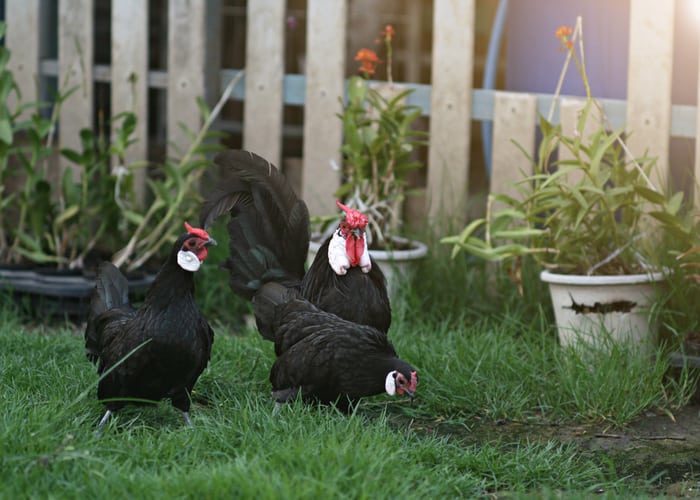
The history of the Rosecomb dates back to at least the fourteenth century, making it one of the oldest surviving chicken breeds. It was first recorded in Britain, and its interesting appearance made King Richard III an early fan. These chickens continue to be popular with breeders to this day.
The Rosecomb is another true bantam breed. Males weigh about 1.3 to 1.4 pounds, while females are around 1.1 pounds.
They get their name from the color of their comb, a deep rose-red. Their wattles are the same shade, while their large earlobes are pure white. Their bodies are compact, and they have long, abundant tail feathers.
The breed has 25 different color varieties. The most common shades are white, blue and black.
The Rosecomb is a show bird, and its breeding reflects that. It doesn’t produce many eggs, the hens are inattentive mothers, and both sexes tend to have reproductive problems.
But it’s a chicken that’s packed with personality! It’s bold, active, hardy and entertaining, although roosters can sometimes be a little aggressive. Unlike most chickens, the Rosecomb is good at flying – something to bear in mind if you’re planning on fencing in an enclosure!
8. Nankin
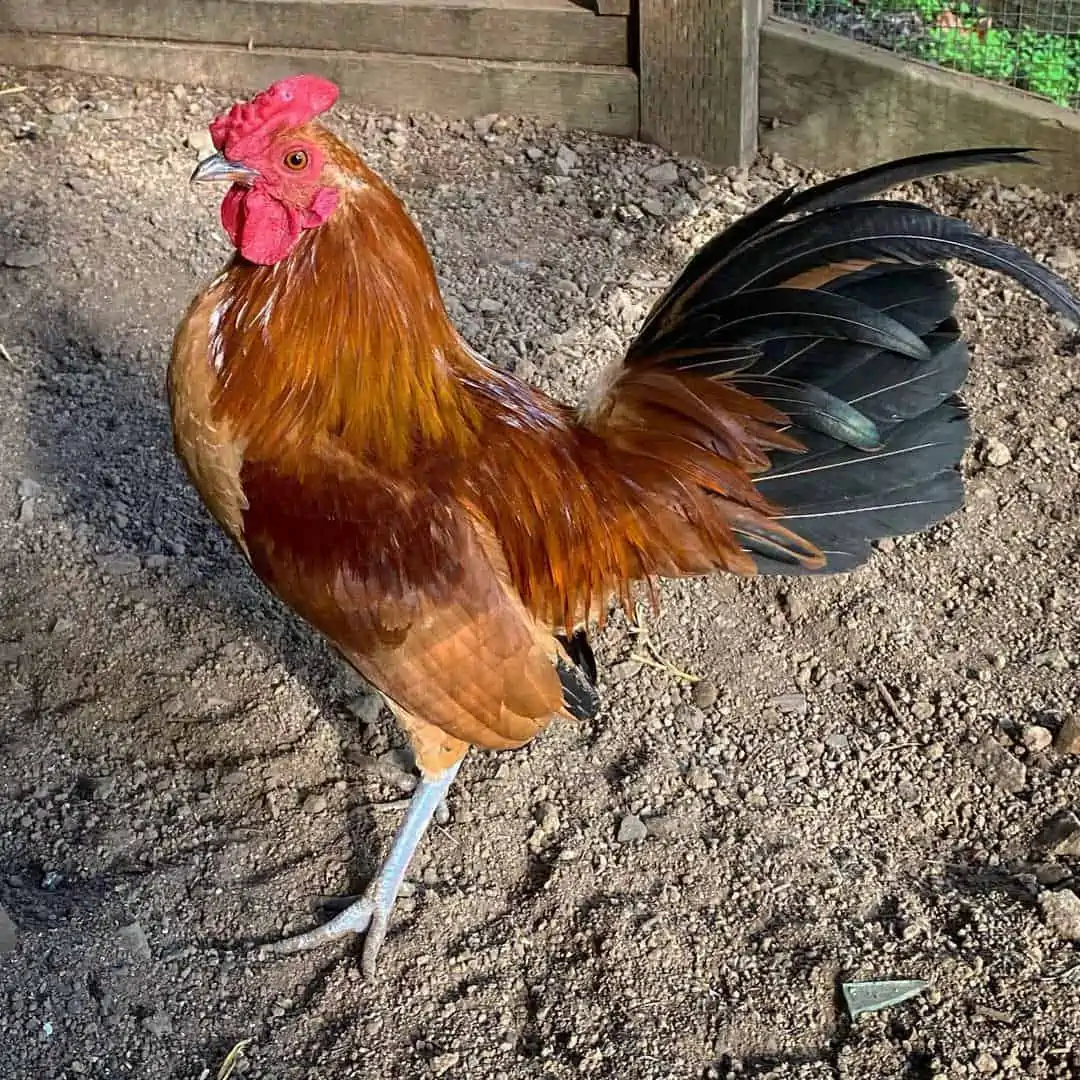
The Nankin is a British true bantam breed, with a lineage that traces back to South East Asia. Its name is thought to come from “nankeen”, a yellowish cotton from China that’s a similar color to the bird’s feahers.
They’re recorded in England as far back as the sixteenth century. Two hundred years later, they were widespread across Europe.
They were never widely bred in the USA. However, in recent years, they have become more popular. The American breed association for Nankins was established in 2006.
In the last few decades, numbers have sadly dwindled. The breed is now considered endangered, although more recently the population has been showing promising signs of recovery.
All Nankins have buff bodies and black tails. But there are two different varieties, distinguished by their combs. The single comb has a large comb with five points, while the rose comb has a medium-sized comb that ends in a single point.
Adult males range in weight from 1.5 to 1.63 pounds. Adult females are between 1.25 and 1.37 pounds.
Nankin hens are good layers and sitters, and in the past were often used to incubate the eggs of game-birds. Today, however, the chickens are primarily used as show birds and pets.
9. Sebright
The Sebright is another true bantam breed that comes from Britain. It dates back to the eighteenth century and was developed by Sir John Saunders Sebright, from whom it gets its name.
It’s a small but beautiful bird, kept for showing rather than for eggs or meat. In the UK, only two colors, gold and silver, are recognised. But the range of colors permitted is far wider in other European countries.
Hens weigh about 1.1 pounds, while roosters are between 1.3 and 1.4 pounds. Both sexes have short backs, wide chests, and a jaunty gait. Their combs, earlobes and wattles can be either red or a purple color known as “mulberry”.
They’re active birds, good foragers, and can fly for short distances. And while they’re friendly, they’re also independent spirits. They enjoy a little affection, but like to do their own thing too.
10. Serama
The smallest of all chicken breeds is the Malaysian Serama. It’s a recently developed bantam breed, created in the last 50 years. It’s believed to be the result of cross-breeding between Malaysian and Japanese bantams.
The name “Serama” comes from “Rama”, the title of the kings of Thailand. This regal bird is already popular in the USA, where it was introduced around 2004. But it’s still little known in Europe, with rare birds commanding high prices.
These chickens are distinguished by their upright posture, muscled bodies, full breasts and abundant, vertical tailfeathers. Birds typically weigh around 18 ounces. But some tiny females have been recorded as small as 8.8 ounces.
Seramas are confident birds, but not aggressive. They make great pets, and they’ll happily pose on the showground.
Good Things Come in Little Packages
We hope you’ve enjoyed learning more about some of the many small chicken breeds out there. One things for sure: there are some big personalities among these little birds!
Small breeds can be a good choice if you have limited space to keep chickens. But bear in mind that they will still have specific requirements.
Breeds with feathered legs, for example, will need a dry, mud-free run. And small birds are often vulnerable to the cold. That makes it particularly important to ensure they have good shelter with adequate heating.

